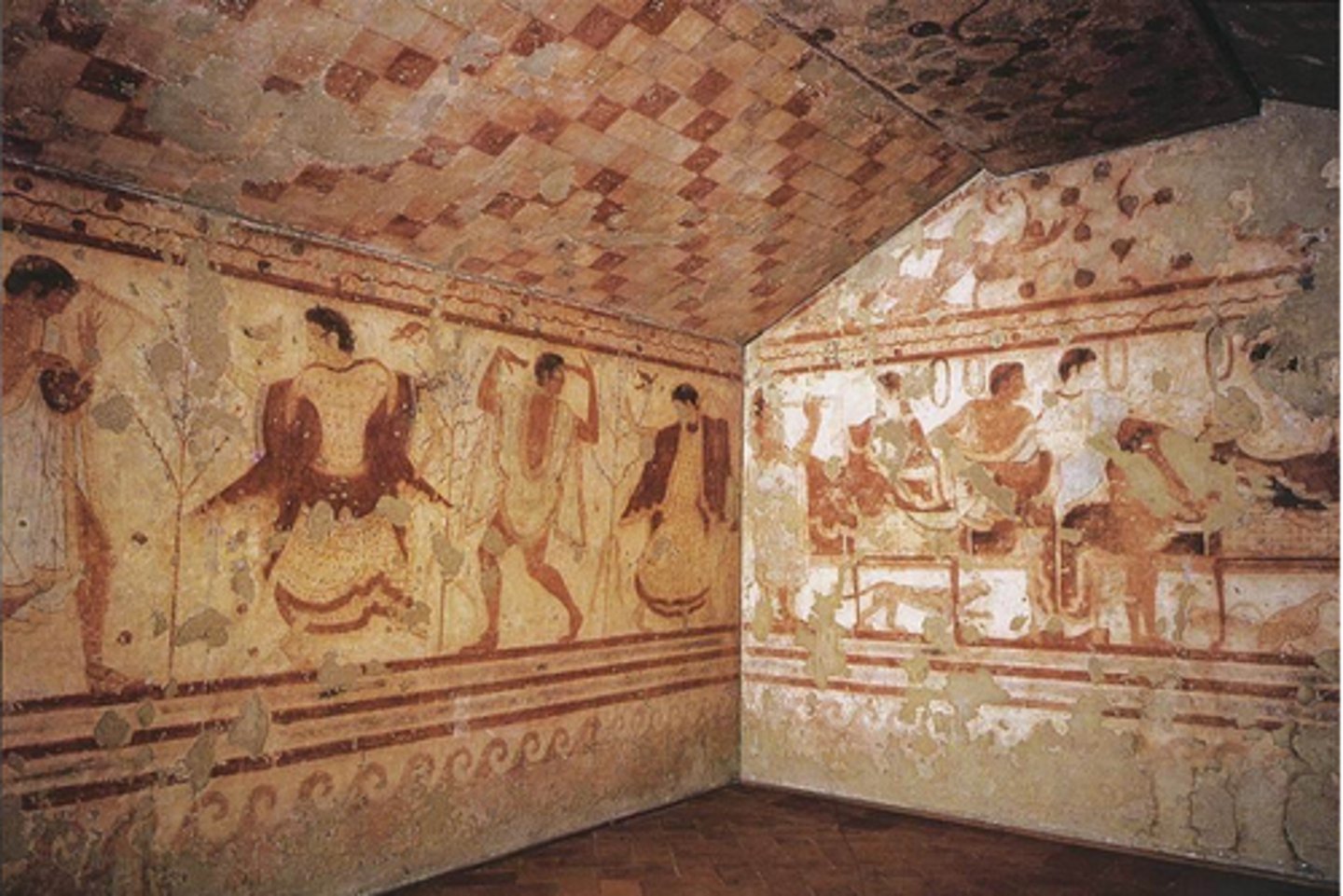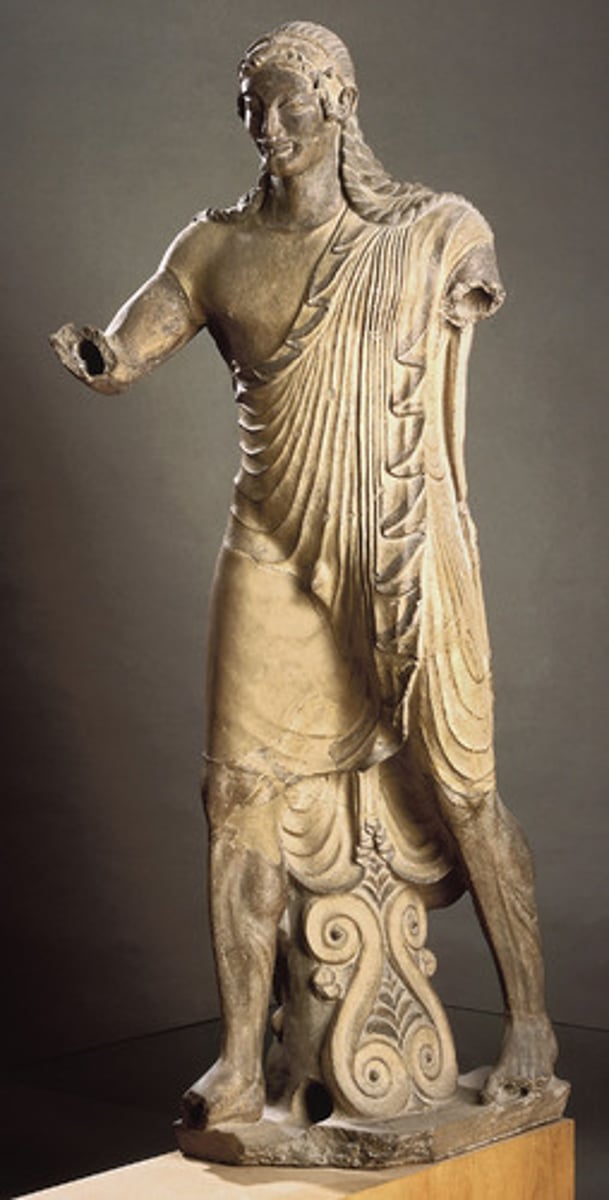Etruscan art
1/3
There's no tags or description
Looks like no tags are added yet.
Name | Mastery | Learn | Test | Matching | Spaced |
|---|
No study sessions yet.
4 Terms
- little architecture survives; this model drawn from descriptions by Vitruvius
- steps directly in front of deep porch; entrances emphasized
- influences of Greek architecture in columns and capitals; columns unfluted, made of wood
- Tuscan order
- raised on a podium
- three doors represent three gods; division of interior into three spaces
- statue of Apollo placed on roof instead of cella
- only foundation remain
Temple of Minerva

- named after a triclinium
- banqueting couples recline, eating in ancient manner
- men painted in darker colors than women
- trees spring up between main figures; shrubbery grows between reclining couches; suggests rural setting?
- maybe funeral banquet intended; emotions of celebration
- ceiling w/ polychrome checkerboard pattern; circles may symbolize time
- dancing figures play musical instruments in festive celebration of the dead
Tomb of the Triclinium

- of married couple, whose ashes were placed inside
- full-length portraits
- both once held objects in hands (drinks or egg (symbolize afterlife)?)
- attention on upper half of figures
- unrealistic L-turn to legs
- ancient tradition of reclining while eating;represents a banquet couch
- man w/ protective gesture around woman; woman feeds man
- broad shoulders; little anatomical modeling
- made in 4 pieces and joined together
- inclusion of woman suggests Etruscan society egalitarian
Sarcophagus of the Spouses

- one of four large figures that once stood on roof of Temple of Minerva; depicted labors of Hercules
- meant to be seen from below
- archaic smile
- may have been carved by Vulca of Veii (most famous Etruscan sculpture of the age)
- strides forward
- idealized, well-muscled body
Apollo from Veii
